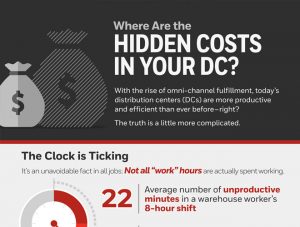Choosing the right ID card printer is a major decision and requires a lot of research, especially if you’re going to be printing your own cards.
That’s why we created this quick guide to help you find the best ID card printer for your organization. Let’s go through some common considerations you should think about before buying your printer:
How Will the Cards Be Used?
The first step in choosing the right ID card printer is determining how you will use the cards.
Will the cards be used for security purposes (i.e. access cards, employee badges, parking passes)?
Will they be used for identification purposes (i.e. student ID, membership cards)? Or a combination of both?
The way you answer this question will help you determine which type of printer you should buy.
For security purposes, companies often use magnetic stripe printers because they can encode information on the card to prevent unauthorized users from accessing restricted areas or entering secure buildings after hours. Many popular security printers also offer features like keystroke encryption and fingerprint readers to verify a user’s identity and keep sensitive information secure.
For identification purposes, there are many different types of ID card printers available on the market. Many schools and universities use thermal ID card printers to print student ID cards. These printers cost less than other types of card printers, but they’re also much slower. If you own a small business or organization, you may want to consider a Dye Sublimation printer. These printers can print full-color images onto almost any type of material. In addition to printing images, these printers can also print text and barcodes (when used with an optional ribbon), creating some of the most versatile ID cards available today.
Do You Need a Dual-Sided Print?
While most ID cards will only be printed on one side, there are several different types of printers capable of printing a card on both sides. Dual-sided printing can be beneficial when you’re printing ID cards for guests at a conference. By printing the front and back of the card simultaneously, you can avoid wasting valuable time when people visit your office or attend events at your company.
What Speed is Acceptable?
Speed matters when you’re choosing an ID card printer because it speeds up the check-in process and reduces the amount of time it takes to print each card. When choosing a speed, think about how many cards you’ll print each day. If you plan on printing a large number of cards, you’ll want a printer with the fastest speed available (over 200 dpi). If you only plan on printing a few cards each day, you may be able to buy the cheaper option.
What Material Will You Print On?
The next important decision to make is what type of material you’ll be printing your cards on. There are a few different types of card printers available on the market and each offers its own advantages and disadvantages. For instance, some card printers are capable of printing directly onto special plastic ID badges, while others can print directly onto any plastic card. Some brands offer dual-sided printing, while others don’t. Some companies only offer a few different models of printers, while others produce over 50 different models.
The best ID card printer for you will depend on what material you want to use and how many cards you plan on printing each day. For instance, schools and universities often print their student ID cards using thermal ID card printers because these printers are capable of printing directly onto plastic badges. The cost of this type of printer is also much lower than a Dye Sublimation printer. If you only plan on printing an occasional student ID card, a thermal printer may be the best choice.
Do You Need Security Features?
Now that you’ve chosen the type of printer you want, it’s time to choose the features you want. Some ID card printers come with a government-grade encryption system designed to protect valuable information stored on the card.
Some printers are also capable of encoding cards with data from employee databases, which can prevent unauthorized access when an employee leaves the company. However, if security isn’t a concern for your organization, there are many cheaper options without these features available on the market. If savings is more important than security, you may want to consider a cheaper printer instead of buying one with all of these extra features.
Is Portability Important?
Some card printers can be difficult to transport thanks to their large size. In addition to their size, these printers sometimes require a lot of space on desks in order to work properly. This means that these printers may not be the best option for offices with limited space. If you want a printer that you can carry around with you, consider investing in one that’s designed to be portable.




